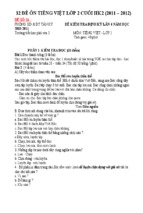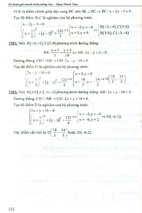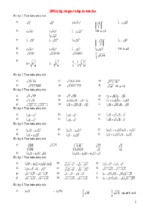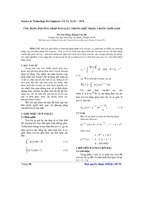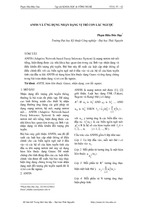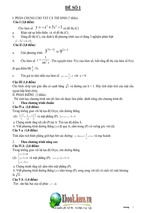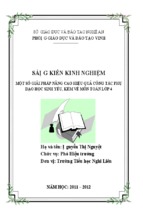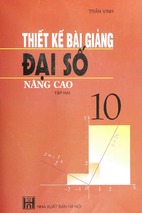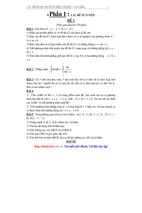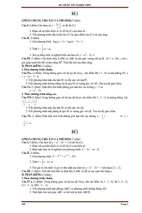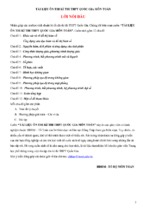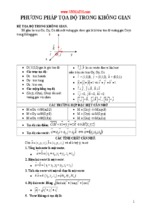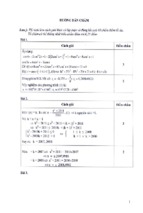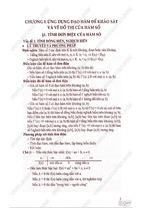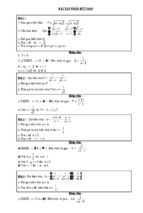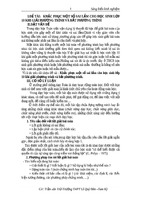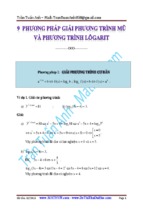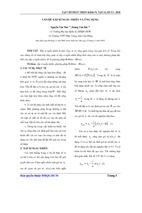T HE PENGUIN PRESS
Published by the Penguin Group
Penguin Group (USA) LLC
375 Hudson Street
New York, New York 10014
USA • Canada • UK • Ireland • Australia • New Zealand • India • South Africa • China
penguin. com
A Penguin Random House Company
First published by T he Penguin Press, a member of Penguin Group (USA) LLC, 2014
Copyright © 2014 by Jordan Ellenberg
Penguin supports copyright. Copyright fuels creativity, encourages diverse voices, promotes free speech, and
creates a vibrant culture. T hank you for buying an authorized edition of this book and for complying with
copyright laws by not reproducing, scanning, or distributing any part of it in any form without permission. You are
supporting writers and allowing Penguin to continue to publish books for every reader.
Grateful acknowledgment is made for permission to reprint excerpts from the following copyrighted works:
“ Soonest Mended” from The Double Dream of Spring by John Ashbery. Copyright © 1966, 1970 by John
Ashbery. Reprinted by permission of Georges Borchardt, Inc., on behalf of the author.
“ Sitting on a Fence,” words and music by Ian Cullimore and Paul Heaton. Copyright © 1986 Universal Music
Publishing Ltd. and Universal / Island Music Ltd. All rights in the United States and Canada controlled and
administered by Universal Polygram International Publishing, Inc. All rights reserved. Used by permission.
Reprinted by permission of Hal Leonard Corporation.
LIBRARY OF CONGRESS CAT ALOGING-IN-PUBLICAT ION DAT A
Ellenberg, Jordan, 1971- author.
How not to be wrong : the power of mathematical thinking / Jordan Ellenberg.
pages cm
Includes bibliographical references and index.
ISBN 978-0-698-16384-3
1. Mathematics—Miscellanea. 2. Mathematical analysis—Miscellanea. I. T itle.
QA99.E45 2014
510—dc23 2014005394
Version_
for Tanya
“What is best in mathematics deserves not merely to be learnt
as a task, but to be assimilated as a part of daily thought, and
brought again and again before the mind with ever-renewed
encouragement.”
BERT RAND RUSSELL, “The Study of Mathematics” (1902)
Title Page
Copyright
Dedication
Epigraph
WHEN AM I GOING TO USE THIS?
PART I
Linearity
One. LESS LIKE SWEDEN
Two. STRAIGHT LOCALLY, CURVED GLOBALLY
Three. EVERYONE IS OBESE
Four. HOW MUCH IS THAT IN DEAD AMERICANS?
Five. MORE PIE THAN PLATE
PART II
Inference
Six. THE BALTIMORE STOCKBROKER AND THE BIBLE CODE
Seven. DEAD FISH DON’T READ MINDS
Eight. REDUCTIO AD UNLIKELY
Nine. THE INTERNATIONAL JOURNAL OF HARUSPICY
Ten. ARE YOU THERE, GOD? IT’S ME, BAYESIAN INFERENCE
PART III
Expectation
Eleven. WHAT TO EXPECT WHEN YOU’RE EXPECTING TO WIN THE
LOTTERY
Twelve. MISS MORE PLANES!
Thirteen. WHERE THE TRAIN TRACKS MEET
PART IV
Regression
Fourteen. THE TRIUMPH OF MEDIOCRITY
Fifteen. GALTON’S ELLIPSE
Sixteen. DOES LUNG CANCER MAKE YOU SMOKE CIGARETTES?
PART V
Existence
Seventeen. THERE IS NO SUCH THING AS PUBLIC OPINION
Eighteen. “OUT OF NOTHING I HAVE CREATED A STRANGE NEW
UNIVERSE”
HOW TO BE RIGHT
Acknowledgments
Notes
Index
G
WHEN AM I GOING TO USE THIS?
R
ight now, in a classroom somewhere in the world, a student is
mouthing off to her math teacher. The teacher has just asked her to
spend a substantial portion of her weekend computing a list of thirty
definite integrals.
There are other things the student would rather do. There is, in fact, hardly
anything she would not rather do. She knows this quite clearly, because she
spent a substantial portion of the previous weekend computing a different—
but not very different—list of thirty definite integrals. She doesn’t see the
point, and she tells her teacher so. And at some point in this conversation, the
student is going to ask the question the teacher fears most:
“When am I going to use this?”
Now the math teacher is probably going to say something like:
“I know this seems dull to you, but remember, you don’t know what career
you’ll choose—you may not see the relevance now, but you might go into a
field where it’ll be really important that you know how to compute definite
integrals quickly and correctly by hand.”
This answer is seldom satisfying to the student. That’s because it’s a lie.
And the teacher and the student both know it’s a lie. The number of adults who
will ever make use of the integral of (1 − 3x + 4x2)−2 dx, or the formula for
the cosine of 3θ, or synthetic division of polynomials, can be counted on a
few thousand hands.
The lie is not very satisfying to the teacher, either. I should know: in my
many years as a math professor I’ve asked many hundreds of college students
to compute lists of definite integrals.
Fortunately, there’s a better answer. It goes something like this:
“Mathematics is not just a sequence of computations to be carried out by
rote until your patience or stamina runs out—although it might seem that way
from what you’ve been taught in courses called mathematics. Those integrals
are to mathematics as weight training and calisthenics are to soccer. If you
want to play soccer—I mean, really play, at a competitive level—you’ve got
to do a lot of boring, repetitive, apparently pointless drills. Do professional
players ever use those drills? Well, you won’t see anybody on the field
curling a weight or zigzagging between traffic cones. But you do see players
using the strength, speed, insight, and flexibility they built up by doing those
drills, week after tedious week. Learning those drills is part of learning
soccer.
“If you want to play soccer for a living, or even make the varsity team,
you’re going to be spending lots of boring weekends on the practice field.
There’s no other way. But now here’s the good news. If the drills are too much
for you to take, you can still play for fun, with friends. You can enjoy the thrill
of making a slick pass between defenders or scoring from distance just as
much as a pro athlete does. You’ll be healthier and happier than you would be
if you sat home watching the professionals on TV.
“Mathematics is pretty much the same. You may not be aiming for a
mathematically oriented career. That’s fine—most people aren’t. But you can
still do math. You probably already are doing math, even if you don’t call it
that. Math is woven into the way we reason. And math makes you better at
things. Knowing mathematics is like wearing a pair of X-ray specs that reveal
hidden structures underneath the messy and chaotic surface of the world.
Math is a science of not being wrong about things, its techniques and habits
hammered out by centuries of hard work and argument. With the tools of
mathematics in hand, you can understand the world in a deeper, sounder, and
more meaningful way. All you need is a coach, or even just a book, to teach
you the rules and some basic tactics. I will be your coach. I will show you
how.”
For reasons of time, this is seldom what I actually say in the classroom.
But in a book, there’s room to stretch out a little more. I hope to back up the
grand claims I just made by showing you that the problems we think about
every day—problems of politics, of medicine, of commerce, of theology—
are shot through with mathematics. Understanding this gives you access to
insights accessible by no other means.
Even if I did give my student the full inspirational speech, she might—if
she is really sharp—remain unconvinced.
“That sounds good, Professor,” she’ll say. “But it’s pretty abstract. You
say that with mathematics at your disposal you can get things right you’d
otherwise get wrong. But what kind of things? Give me an actual example.”
And at that point I would tell her the story of Abraham Wald and the
missing bullet holes.
G
G
G
G
G
This story, like many World War II stories, starts with the Nazis hounding a
Jew out of Europe and ends with the Nazis regretting it. Abraham Wald was
born in 1902 in what was then the city of Klausenburg in what was then the
Austro-Hungarian Empire. By the time Wald was a teenager, one World War
was in the books and his hometown had become Cluj, Romania. He was the
grandson of a rabbi and the son of a kosher baker, but the younger Wald was a
mathematician almost from the start. His talent for the subject was quickly
recognized, and he was admitted to study mathematics at the University of
Vienna, where he was drawn to subjects abstract and recondite even by the
standards of pure mathematics: set theory and metric spaces.
But when Wald’s studies were completed, it was the mid-1930s, Austria
was deep in economic distress, and there was no possibility that a foreigner
could be hired as a professor in Vienna. Wald was rescued by a job offer from
Oskar Morgenstern. Morgenstern would later immigrate to the United States
and help invent game theory, but in 1933 he was the director of the Austrian
Institute for Economic Research, and he hired Wald at a small salary to do
mathematical odd jobs. That turned out to be a good move for Wald: his
experience in economics got him a fellowship offer at the Cowles
Commission, an economic institute then located in Colorado Springs. Despite
the ever-worsening political situation, Wald was reluctant to take a step that
would lead him away from pure mathematics for good. But then the Nazis
conquered Austria, making Wald’s decision substantially easier. After just a
few months in Colorado, he was offered a professorship of statistics at
Columbia; he packed up once again and moved to New York.
And that was where he fought the war.
The Statistical Research Group (SRG), where Wald spent much of World
War II, was a classified program that yoked the assembled might of American
statisticians to the war effort—something like the Manhattan Project, except
the weapons being developed were equations, not explosives. And the SRG
was actually in Manhattan, at 401 West 118th Street in Morningside Heights,
just a block away from Columbia University. The building now houses
Columbia faculty apartments and some doctor’s offices, but in 1943 it was the
buzzing, sparking nerve center of wartime math. At the Applied Mathematics
Group−Columbia, dozens of young women bent over Marchant desktop
calculators were calculating formulas for the optimal curve a fighter should
trace out through the air in order to keep an enemy plane in its gunsights. In
another apartment, a team of researchers from Princeton was developing
protocols for strategic bombing. And Columbia’s wing of the atom bomb
project was right next door.
But the SRG was the most high-powered, and ultimately the most
influential, of any of these groups. The atmosphere combined the intellectual
openness and intensity of an academic department with the shared sense of
purpose that comes only with high stakes. “When we made
recommendations,” W. Allen Wallis, the director, wrote, “frequently things
happened. Fighter planes entered combat with their machine guns loaded
according to Jack Wolfowitz’s* recommendations about mixing types of
ammunition, and maybe the pilots came back or maybe they didn’t. Navy
planes launched rockets whose propellants had been accepted by Abe
Girshick’s sampling-inspection plans, and maybe the rockets exploded and
destroyed our own planes and pilots or maybe they destroyed the target.”
The mathematical talent at hand was equal to the gravity of the task. In
Wallis’s words, the SRG was “the most extraordinary group of statisticians
ever organized, taking into account both number and quality.” Frederick
Mosteller, who would later found Harvard’s statistics department, was there.
So was Leonard Jimmie Savage, the pioneer of decision theory and great
advocate of the field that came to be called Bayesian statistics.* Norbert
Wiener, the MIT mathematician and the creator of cybernetics, dropped by
from time to time. This was a group where Milton Friedman, the future
Nobelist in economics, was often the fourth-smartest person in the room.
The smartest person in the room was usually Abraham Wald. Wald had
been Allen Wallis’s teacher at Columbia, and functioned as a kind of
mathematical eminence to the group. Still an “enemy alien,” he was not
technically allowed to see the classified reports he was producing; the joke
around SRG was that the secretaries were required to pull each sheet of
notepaper out of his hands as soon as he was finished writing on it. Wald was,
in some ways, an unlikely participant. His inclination, as it always had been,
was toward abstraction, and away from direct applications. But his motivation
to use his talents against the Axis was obvious. And when you needed to turn a
vague idea into solid mathematics, Wald was the person you wanted at your
side.
—
So here’s the question. You don’t want your planes to get shot down by enemy
fighters, so you armor them. But armor makes the plane heavier, and heavier
planes are less maneuverable and use more fuel. Armoring the planes too
much is a problem; armoring the planes too little is a problem. Somewhere in
between there’s an optimum. The reason you have a team of mathematicians
socked away in an apartment in New York City is to figure out where that
optimum is.
The military came to the SRG with some data they thought might be
useful. When American planes came back from engagements over Europe,
they were covered in bullet holes. But the damage wasn’t uniformly
distributed across the aircraft. There were more bullet holes in the fuselage,
not so many in the engines.
G
G
G
G
G
G
U.UU
U.7W
U.YY
U.8
G
G G
G
The officers saw an opportunity for efficiency; you can get the same
protection with less armor if you concentrate the armor on the places with the
greatest need, where the planes are getting hit the most. But exactly how much
more armor belonged on those parts of the plane? That was the answer they
came to Wald for. It wasn’t the answer they got.
The armor, said Wald, doesn’t go where the bullet holes are. It goes where
the bullet holes aren’t: on the engines.
Wald’s insight was simply to ask: where are the missing holes? The ones
that would have been all over the engine casing, if the damage had been spread
equally all over the plane? Wald was pretty sure he knew. The missing bullet
holes were on the missing planes. The reason planes were coming back with
fewer hits to the engine is that planes that got hit in the engine weren’t coming
back. Whereas the large number of planes returning to base with a thoroughly
Swiss-cheesed fuselage is pretty strong evidence that hits to the fuselage can
(and therefore should) be tolerated. If you go the recovery room at the
hospital, you’ll see a lot more people with bullet holes in their legs than
people with bullet holes in their chests. But that’s not because people don’t
get shot in the chest; it’s because the people who get shot in the chest don’t
recover.
Here’s an old mathematician’s trick that makes the picture perfectly clear:
set some variables to zero. In this case, the variable to tweak is the
probability that a plane that takes a hit to the engine manages to stay in the air.
Setting that probability to zero means a single shot to the engine is guaranteed
to bring the plane down. What would the data look like then? You’d have
planes coming back with bullet holes all over the wings, the fuselage, the nose
—but none at all on the engine. The military analyst has two options for
explaining this: either the German bullets just happen to hit every part of the
plane but one, or the engine is a point of total vulnerability. Both stories
explain the data, but the latter makes a lot more sense. The armor goes where
the bullet holes aren’t.
Wald’s recommendations were quickly put into effect, and were still
being used by the navy and the air force through the wars in Korea and
Vietnam. I can’t tell you exactly how many American planes they saved,
though the data-slinging descendants of the SRG inside today’s military no
doubt have a pretty good idea. One thing the American defense establishment
has traditionally understood very well is that countries don’t win wars just by
being braver than the other side, or freer, or slightly preferred by God. The
winners are usually the guys who get 5% fewer of their planes shot down, or
use 5% less fuel, or get 5% more nutrition into their infantry at 95% of the
cost. That’s not the stuff war movies are made of, but it’s the stuff wars are
made of. And there’s math every step of the way.
—
Why did Wald see what the officers, who had vastly more knowledge and
understanding of aerial combat, couldn’t? It comes back to his math-trained
habits of thought. A mathematician is always asking, “What assumptions are
you making? And are they justified?” This can be annoying. But it can also be
very productive. In this case, the officers were making an assumption
unwittingly: that the planes that came back were a random sample of all the
planes. If that were true, you could draw conclusions about the distribution of
bullet holes on all the planes by examining the distribution of bullet holes on
only the surviving planes. Once you recognize that you’ve been making that
hypothesis, it only takes a moment to realize it’s dead wrong; there’s no
reason at all to expect the planes to have an equal likelihood of survival no
matter where they get hit. In a piece of mathematical lingo we’ll come back to
in chapter 15, the rate of survival and the location of the bullet holes are
correlated.
Wald’s other advantage was his tendency toward abstraction. Wolfowitz,
who had studied under Wald at Columbia, wrote that the problems he favored
were “all of the most abstract sort,” and that he was “always ready to talk about
mathematics, but uninterested in popularization and special applications.”
Wald’s personality made it hard for him to focus his attention on applied
problems, it’s true. The details of planes and guns were, to his eye, so much
upholstery—he peered right through to the mathematical struts and nails
holding the story together. Sometimes that approach can lead you to ignore
features of the problem that really matter. But it also lets you see the
common skeleton shared by problems that look very different on the surface.
Thus you have meaningful experience even in areas where you appear to have
none.
To a mathematician, the structure underlying the bullet hole problem is a
phenomenon called survivorship bias. It arises again and again, in all kinds of
contexts. And once you’re familiar with it, as Wald was, you’re primed to
notice it wherever it’s hiding.
Like mutual funds. Judging the performance of funds is an area where you
don’t want to be wrong, even by a little bit. A shift of 1% in annual growth
might be the difference between a valuable financial asset and a dog. The funds
in Morningstar’s Large Blend category, whose mutual funds invest in big
companies that roughly represent the S&P 500, look like the former kind. The
funds in this class grew an average of 178.4% between 1995 and 2004: a
healthy 10.8% per year.* Sounds like you’d do well, if you had cash on hand,
to invest in those funds, no?
Well, no. A 2006 study by Savant Capital shone a somewhat colder light
on those numbers. Think again about how Morningstar generates its number.
It’s 2004, you take all the funds classified as Large Blend, and you see how
much they grew over the last ten years.
But something’s missing: the funds that aren’t there. Mutual funds don’t
live forever. Some flourish, some die. The ones that die are, by and large, the
ones that don’t make money. So judging a decade’s worth of mutual funds by
the ones that still exist at the end of the ten years is like judging our pilots’
evasive maneuvers by counting the bullet holes in the planes that come back.
What would it mean if we never found more than one bullet hole per plane?
Not that our pilots are brilliant at dodging enemy fire, but that the planes that
got hit twice went down in flames.
The Savant study found that if you included the performance of the dead
funds together with the surviving ones, the rate of return dropped down to
134.5%, a much more ordinary 8.9% per year. More recent research backed
that up: a comprehensive 2011 study in the Review of Finance covering
nearly 5,000 funds found that the excess return rate of the 2,641 survivors is
about 20% higher than the same figure recomputed to include the funds that
didn’t make it. The size of the survivorship effect might have surprised
investors, but it probably wouldn’t have surprised Abraham Wald.
G
G G
G
G
G
G
G
At this point my teenaged interlocutor is going to stop me and ask, quite
reasonably: Where’s the math? Wald was a mathematician, that’s true, and it
can’t be denied that his solution to the problem of the bullet holes was
ingenious, but what’s mathematical about it? There was no trig identity to be
seen, no integral or inequality or formula.
First of all: Wald did use formulas. I told the story without them, because
this is just the introduction. When you write a book explaining human
reproduction to preteens, the introduction stops short of the really hydraulic
stuff about how babies get inside Mommy’s tummy. Instead, you start with
something more like “Everything in nature changes; trees lose their leaves in
winter only to bloom again in spring; the humble caterpillar enters its
chrysalis and emerges as a magnificent butterfly. You are part of nature too,
and . . .”
That’s the part of the book we’re in now.
But we’re all adults here. Turning off the soft focus for a second, here’s
what a sample page of Wald’s actual report looks like:
I hope that wasn’t too shocking.
Still, the real idea behind Wald’s insight doesn’t require any of the
formalism above. We’ve already explained it, using no mathematical notation
of any kind. So my student’s question stands. What makes that math? Isn’t it
just common sense?
Yes. Mathematics is common sense. On some basic level, this is clear.
How can you explain to someone why adding seven things to five things yields
the same result as adding five things to seven? You can’t: that fact is baked
into our way of thinking about combining things together. Mathematicians like
to give names to the phenomena our common sense describes: instead of
saying, “This thing added to that thing is the same thing as that thing added to
this thing,” we say, “Addition is commutative.” Or, because we like our
symbols, we write:
For any choice of a and b, a + b = b + a.
Despite the official-looking formula, we are talking about a fact
instinctively understood by every child.
Multiplication is a slightly different story. The formula looks pretty
similar:
For any choice of a and b, a × b = b × a.
The mind, presented with this statement, does not say “no duh” quite as
instantly as it does for addition. Is it “common sense” that two sets of six
things amount to the same as six sets of two?
Maybe not; but it can become common sense. Here’s my earliest
mathematical memory. I’m lying on the floor in my parents’ house, my cheek
pressed against the shag rug, looking at the stereo. Very probably I am
listening to side two of the Beatles’ Blue Album. Maybe I’m six. This is the
seventies, and therefore the stereo is encased in a pressed wood panel, which
has a rectangular array of airholes punched into the side. Eight holes across,
six holes up and down. So I’m lying there, looking at the airholes. The six
rows of holes. The eight columns of holes. By focusing my gaze in and out I
could make my mind flip back and forth between seeing the rows and seeing
the columns. Six rows with eight holes each. Eight columns with six holes
each.
And then I had it—eight groups of six were the same as six groups of
eight. Not because it was a rule I’d been told, but because it could not be any
other way. The number of holes in the panel was the number of holes in the
panel, no matter which way you counted them.
We tend to teach mathematics as a long list of rules. You learn them in
order and you have to obey them, because if you don’t obey them you get a C-.
This is not mathematics. Mathematics is the study of things that come out a
certain way because there is no other way they could possibly be.
Now let’s be fair: not everything in mathematics can be made as perfectly
transparent to our intuition as addition and multiplication. You can’t do
calculus by common sense. But calculus is still derived from our common
sense—Newton took our physical intuition about objects moving in straight
lines, formalized it, and then built on top of that formal structure a universal
mathematical description of motion. Once you have Newton’s theory in hand,
you can apply it to problems that would make your head spin if you had no
equations to help you. In the same way, we have built-in mental systems for
assessing the likelihood of an uncertain outcome. But those systems are
pretty weak and unreliable, especially when it comes to events of extreme
rarity. That’s when we shore up our intuition with a few sturdy, well-placed
theorems and techniques, and make out of it a mathematical theory of
probability.
The specialized language in which mathematicians converse with each
other is a magnificent tool for conveying complex ideas precisely and swiftly.
But its foreignness can create among outsiders the impression of a sphere of
thought totally alien to ordinary thinking. That’s exactly wrong.
Math is like an atomic-powered prosthesis that you attach to your
common sense, vastly multiplying its reach and strength. Despite the power of
mathematics, and despite its sometimes forbidding notation and abstraction,
the actual mental work involved is little different from the way we think about
more down-to-earth problems. I find it helpful to keep in mind an image of
Iron Man punching a hole through a brick wall. On the one hand, the actual
wall-breaking force is being supplied, not by Tony Stark’s muscles, but by a
series of exquisitely synchronized servomechanisms powered by a compact
beta particle generator. On the other hand, from Tony Stark’s point of view,
what he is doing is punching a wall, exactly as he would without the armor.
Only much, much harder.
To paraphrase Clausewitz: Mathematics is the extension of common sense
by other means.
Without the rigorous structure that math provides, common sense can lead
you astray. That’s what happened to the officers who wanted to armor the parts
of the planes that were already strong enough. But formal mathematics
without common sense—without the constant interplay between abstract
reasoning and our intuitions about quantity, time, space, motion, behavior, and
uncertainty—would just be a sterile exercise in rule-following and
bookkeeping. In other words, math would actually be what the peevish calculus
student believes it to be.
That’s a real danger. John von Neumann, in his 1947 essay “The
Mathematician,” warned:
As a mathematical discipline travels far from its empirical
source, or still more, if it is a second and third generation only
indirectly inspired by ideas coming from “reality” it is beset
with very grave dangers. It becomes more and more purely
aestheticizing, more and more purely l’art pour l’art. This
need not be bad, if the field is surrounded by correlated
subjects, which still have closer empirical connections, or if
the discipline is under the influence of men with an
exceptionally well-developed taste. But there is a grave danger
that the subject will develop along the line of least resistance,
that the stream, so far from its source, will separate into a
multitude of insignificant branches, and that the discipline will
become a disorganized mass of details and complexities. In
other words, at a great distance from its empirical source, or
after much “abstract” inbreeding, a mathematical subject is in
danger of degeneration.*
G
G
G
G
?
G
G
G
If your acquaintance with mathematics comes entirely from school, you have
been told a story that is very limited, and in some important ways false.
School mathematics is largely made up of a sequence of facts and rules, facts
which are certain, rules which come from a higher authority and cannot be
questioned. It treats mathematical matters as completely settled.
Mathematics is not settled. Even concerning the basic objects of study,
like numbers and geometric figures, our ignorance is much greater than our
knowledge. And the things we do know were arrived at only after massive
effort, contention, and confusion. All this sweat and tumult is carefully
screened off in your textbook.
There are facts and there are facts, of course. There has never been much
controversy about whether 1 + 2 = 3. The question of how and whether we
can truly prove that 1 + 2 = 3, which wobbles uneasily between mathematics
and philosophy, is another story—we return to that at the end of the book. But
- Xem thêm -

